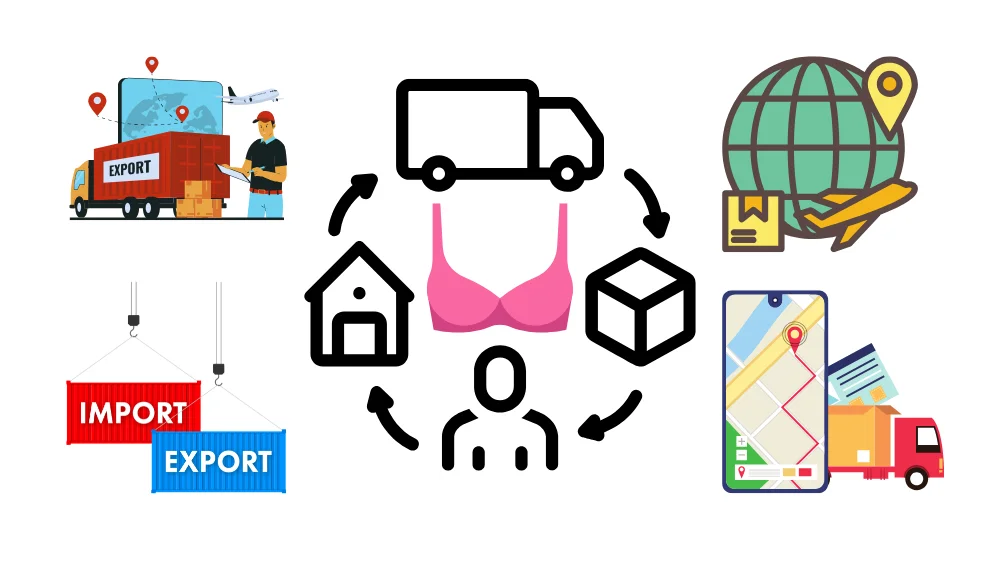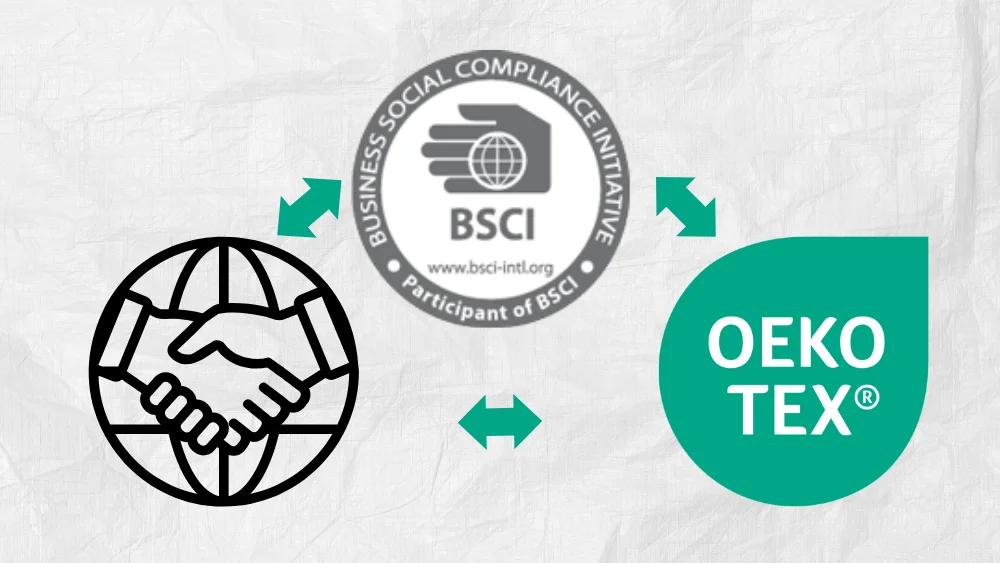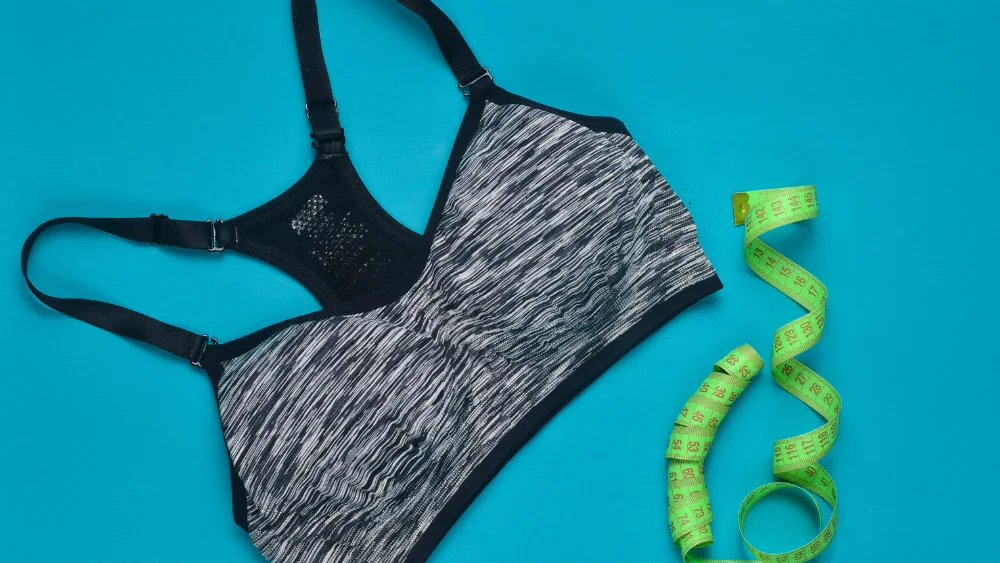Custom lingerie samples play a crucial role in product development by bridging design and market demand. Efficient production, quality control, and timely feedback are key to gaining a competitive edge in the lingerie market.
Table of Contents
The Crucial Role of Custom Lingerie Samples in Brand Development and Market Success
In the development of a lingerie brand, samples play a critical role as a bridge between design and market demand. As intimate apparel, the design and comfort of lingerie directly affect consumers’ purchasing decisions. Therefore, how quickly a brand can obtain high-quality custom lingerie samples becomes a decisive factor in its ability to respond to market changes and capture buyers’ attention. In a competitive market, brands must not only consider the novelty and appeal of their designs but also focus on balancing the speed and quality of sample delivery. This balance is essential for a brand’s ability to enter the market promptly and stand out during busy sales periods, capturing market opportunities.
Custom lingerie samples serve a vital role in product development. They are not only a tangible representation of design but also the first step in consumer experience. Through samples, brands can test market reactions, understand consumer preferences, and make necessary adjustments. Only through qualified and fast custom lingerie samples can a brand decide whether to proceed with full-scale production and ensure product quality and market competitiveness. Therefore, obtaining high-quality custom lingerie samples quickly is key to a brand’s success. Whether facing domestic or international markets, swiftly acquiring samples while ensuring their quality can help brands gain a competitive advantage in the product development cycle.
Key Processes for Obtaining Custom Lingerie Samples

Design Phase: Rapid Adjustments and Optimization from Initial Design to Final Confirmation
The design phase is the most critical starting point in the custom lingerie samples process. A designer’s creativity is initially presented in sketches or digital forms, but this is only the beginning of the sample production. To ensure the accuracy and market relevance of the sample, close collaboration between the brand and manufacturer is essential. From initial design sketches to final sample confirmation, each step requires efficient communication and rapid feedback. By providing precise design files and clear requirements, brands can significantly shorten communication time, avoiding rework caused by unclear designs or misunderstandings, ensuring that every detail is quickly executed.
Key Steps:
- Initial Design Discussion:The designer and the brand discuss the design concept, target audience, functional needs, and ensure that the design aligns with the brand’s positioning and consumer preferences.
- Finalizing the Design Draft:After the initial design is confirmed, the designer should quickly finalize the design draft to avoid unnecessary revisions. The finalized draft becomes the foundation for the custom lingerie samples
- Determining Design Details:This includes key elements like decorations, stitching methods, prints, or embroidery patterns. These details are crucial in determining the final appearance of the sample and need confirmation with the production team to ensure nothing is overlooked.
- Feedback and Adjustment Cycle:Timely feedback is essential. The brand should ensure they provide quick feedback after receiving the initial sample, ensuring that adjustments remain true to the original design vision.
In the design phase, fast feedback is crucial. Any delay in design could directly impact the subsequent process, affecting the entire sample production timeline. Therefore, efficient communication and feedback mechanisms between the design and production teams are vital.
Material Procurement: Choosing the Right Fabric, Supplier Selection, and Market Collaboration
The choice of materials directly impacts the quality and delivery time of the custom lingerie samples. Comfort, durability, elasticity, and breathability are all critical factors in lingerie production. For different seasons and types of lingerie, fabric selection must be precise. Establishing stable relationships with reliable suppliers is key to ensuring quick material procurement when needed.
Fast Procurement Strategies:
- Pre-establish Supplier List:Build long-term relationships with fabric suppliers and prepare a list in advance based on production needs to avoid wasting time searching for materials at the last minute.
- Communicate Fabric Inventory Status with Suppliers:Prior to production, confirm with suppliers the inventory status to ensure there are no delays and that the required materials are available. If special fabrics are needed, confirm the supplier’s production cycle and delivery timeline in advance.
- Plan Procurement Cycle for Special Fabrics:Special or custom fabrics require a longer procurement cycle, so it’s essential to plan in advance to avoid material shortages during sample production.
Any delay in material procurement will result in a delay in starting the sample production, which will impact the sample delivery timeline. Therefore, early planning and close collaboration with suppliers are essential to ensure smooth production initiation.
Pattern Making and Sample Production: The Process of Quickly Creating Patterns and Samples
Pattern making is the core stage of sample production, directly influencing the fit, comfort, and aesthetics of the final product. In this process, designers and the production team need to work closely together to ensure that the sample meets the brand’s design requirements. When communicating with the factory, designers must provide accurate design drawings and detailed instructions for each step to ensure that every detail is precisely replicated.
Efficient Pattern Making Tips:
- Provide Accurate Design Measurements and Style Drawings:Designers should provide detailed design measurements, style drawings, and sewing requirements to avoid rework due to unclear designs.
- Collaborate with Factories to Ensure Fast Pattern Making:Modern pattern-making techniques, such as 3D pattern making technology, can improve precision and efficiency, reducing errors and shortening pattern-making time.
- Conduct Rigorous Sample Fitting Tests After Each Pattern:After the sample is made, it should undergo strict fitting tests to ensure it fits different body types and meets consumer comfort needs.
The core of rapid pattern making lies in close communication with the production team and ensuring that feedback is implemented immediately after each pattern, ensuring that the sample meets design requirements.
Quality Control and Feedback: Ensuring High Quality at Every Stage
In the entire sample production process, every stage must have strict quality control. From fabric selection to pattern making and final production, each stage requires clear standards and inspection procedures. Especially in fast production processes, maintaining a balance between quality and speed is particularly important.
Efficient Quality Control:
- Regular Sample Inspections and Measurements:During production, the quality control team should conduct regular inspections of the samples to ensure each stage meets design standards.
- Multiple Inspections Before Sample Delivery:Before sample delivery, the production team should perform rigorous checks to ensure no details are overlooked, avoiding quality issues that could affect the brand’s image.
- Conduct Market Research to Ensure Material Suitability and Quality:Before production, the brand should conduct thorough market research to ensure the materials chosen align with market demand and provide a high-quality wearing experience.
Balancing quality and speed is a challenge, and manufacturers must optimize production processes to ensure they can deliver qualified samples in the shortest time without compromising quality.
How to Complete Custom Lingerie Samples Production in the Shortest Time

Time is a crucial factor in the success of a lingerie brand, especially when it comes to custom lingerie samples production. By working closely with factories, using advanced digital collaboration tools, employing flexible international communication strategies, and optimizing logistics management, brands can significantly increase production efficiency and reduce lead times for sample delivery. Below are the key factors that ensure custom lingerie samples production is completed in the shortest possible time:
Collaboration Model with Factories: How to Communicate Efficiently with Manufacturers to Shorten Production Time
Efficient communication is the foundation for smooth production of custom lingerie samples. Choosing an experienced manufacturer with strong communication skills can dramatically shorten the sample creation cycle. Manufacturers must not only have professional production capabilities but also maintain close contact with the brand throughout the process, ensuring that each stage receives quick feedback and adjustments.
Efficient Communication Tips:
- Choose the Right Manufacturer: An experienced manufacturer can quickly understand design requirements and possess the ability to handle issues swiftly. They often have more refined processes and systems in place to ensure timely sample production.
- Instant Feedback Mechanism: Establishing a real-time feedback loop with the factory is key. This ensures that design files, sample modification requests, and production progress can be quickly addressed at each stage, preventing delays caused by slow information exchange. Regular progress reports and email communication ensure that every step stays on track.
- Weekly Progress Follow-ups: Maintaining weekly progress follow-ups ensures every stage of the sample production is closely monitored. During communications, clarifying production progress, required materials, timelines, and potential delays helps preemptively solve any issues.
Use of Digital Collaboration Tools:
With the development of digital technologies, many brands now leverage digital tools to enhance communication efficiency. Using instant messaging apps, shared design platforms, and project management software allows the brand and manufacturer to share design files, modification feedback, and progress reports in real-time.
- Instant Messaging Apps: Tools like WhatsApp or WeChat ensure constant communication during the sample creation process, providing quick responses to any questions.
- Shared Design Platforms: Platforms like Google Drive or Dropbox allow real-time synchronization of design files and revision history, reducing misunderstandings and lost information.
- Project Management Software: Tools like Trello or Asana help monitor progress, assign tasks, and adjust plans in case of delays.
Challenges and Solutions in Cross-Border Collaboration: Logistics, Time Zones, and Quality Control
While working with overseas manufacturers can save costs, challenges such as time zone differences, language barriers, and logistics issues can impact communication and delivery times for custom lingerie samples. To ensure efficient cross-border collaboration, brands need to prepare thoroughly in terms of communication, logistics, and quality control.
Cross-Border Communication Strategies:
- Time Zone Management: Time zone differences can lead to inefficiencies in communication. To overcome this, brands should adjust working hours flexibly or set regular communication times to ensure smooth information flow. Multiple communication sessions during the day can prevent delays due to time differences.
- Online Tools and Cloud File Management: Using cloud file management systems like Google Drive or Dropbox ensures real-time updates to design files and production progress, while online meeting tools like Zoom or Teams bridge time zone gaps, facilitating real-time communication and minimizing time wasted due to physical distance.
Logistics Management:
- Pre-Arranged Shipping: International logistics can face unpredictable shipping times, especially for urgent sample production. To ensure samples arrive on time, brands should arrange shipping and logistics in advance, ensuring on-time delivery. Partnering with experienced international logistics companies and maintaining close communication helps ensure the smooth flow of goods.
- Reliable Logistics Partners: Choosing a dependable logistics partner is crucial, especially for international shipments. Logistics companies must provide accurate progress updates and clear tracking information to reduce delays that could affect the sample delivery timeline.
Quality Control:
- Collaborative Production Process Review: To ensure sample quality, brands should work with manufacturers to review the production process and ensure standardized operations at every stage. This helps prevent rework due to production quality issues.
- Dual Quality Inspection: While it’s important to maintain high quality during fast sample production, a dual quality inspection system is crucial. Brands can conduct an internal quality check via the factory’s team, followed by a secondary review from an external third-party quality inspection company. This two-tiered approach ensures the sample meets brand standards and reduces potential issues.
Factors Affecting Sample Delivery Time

Sample delivery times depend not only on communication and production efficiency but also on several influencing factors. The complexity of the design, fabric procurement, and sample approval speed can all directly impact delivery time. To ensure timely sample delivery, brands must plan ahead and coordinate each stage effectively.
Design Complexity:
If the design of the custom lingerie samples is particularly complex, such as involving multiple materials, custom accessories, or special processes, it can significantly increase production time.
How to Address This:
- Clarify Design Scope at the Design Stage: At the design stage, brands and design teams should clarify the design’s complexity and discuss with the manufacturer any challenges with implementation. If designs are overly complex, it could extend the sample creation timeline. Simplifying the design and material choices can help reduce production time.
- Flexible Design Adjustments: Since designs can evolve during the process, maintaining flexible communication with the design team and adjusting the design as necessary can help avoid delays and rework.
Fabric Procurement:
Choosing rare or special materials can require additional time to source.
Solution:
- Establish Long-Term Supplier Relationships: Ensuring timely material supply is critical for sample creation. Building long-term partnerships with reliable suppliers guarantees on-time delivery of necessary fabrics, reducing delays caused by material shortages.
- Prepare Alternative Solutions: When selecting specialty fabrics, brands should prepare backup plans and alternative suppliers in case material procurement encounters issues.
Sample Approval:
An overly long sample approval cycle can delay final delivery.
Optimization Strategy:
- Clarify Approval Criteria and Process: Before sample creation begins, brands should clearly define the sample approval criteria and timeline with the design team and other stakeholders. Timely feedback at each stage ensures the approval process doesn’t delay sample delivery.
- Accelerate the Approval Process: Brands can prepare approval checklists and inspection criteria in advance, ensuring a quick review of samples at each stage and avoiding delays during final approval.
By implementing these strategies, brands can effectively manage factors that impact custom lingerie sample delivery time, ensuring that samples are completed within the shortest possible time while meeting quality standards.
How to Balance Speed and Quality in Custom Lingerie Samples Production

In the accelerated production of custom lingerie samples, ensuring product quality while increasing speed is not contradictory. In fact, balancing speed and quality is key to success. Only by responding quickly to market demands while maintaining high-quality control standards can a brand truly gain a competitive edge. Here are some important strategies to maintain quality while producing samples quickly:
How to Ensure the Quality of Custom Lingerie Samples During Accelerated Production?
Quality Control Methods:
- Strict Quality Control at Each Production Stage: Whether it is design, pattern making, sample production, or post-production inspection and delivery, quality control must be integrated throughout the entire process. By setting quality checkpoints at each stage, brands can ensure that no step is overlooked. For example, during the design phase, it is essential to confirm that every design detail meets the brand’s standards. In the production stage, every step of the pattern making and manufacturing process must undergo rigorous scrutiny.
- Use of Advanced Production Technologies and Equipment: Advanced technologies and equipment can improve production efficiency while ensuring product precision and consistency. For instance, 3D printing technology can optimize pattern making, or automated production lines can increase speed while maintaining uniformity and high quality of the samples. These high-tech tools minimize human errors, shorten production time, and increase the standardization of each sample.
- Set Quality Checkpoints at Every Stage: Setting quality checkpoints at each stage of sample production ensures that issues can be identified and resolved promptly, avoiding major quality defects. For example, at the design confirmation stage, brands can require an initial review of the sample before pattern making begins. During production, regular quality inspections should be scheduled to ensure each sample meets the brand’s requirements.
Establishing a Quality Management System
- Choose Certified Factories: Selecting manufacturers with ISO, BSCI, or other international certifications is crucial for ensuring product quality. These certifications mean that factories have established robust quality management systems capable of standardizing processes and strictly controlling quality to ensure the samples meet the required standards. When choosing a manufacturer, brands should not only consider production capabilities but also ensure that the manufacturer has an effective quality management system that can control every aspect of the production process.
- ISO Certification: ISO certification is an internationally recognized quality management standard that ensures factories follow global quality control standards during production and continuously improve their quality management systems.
- BSCI Certification: The BSCI certification focuses on social responsibility within the supply chain, ensuring factories comply with fair labor, environmental, and ethical practices. This certification not only guarantees ethical production processes but also further assures the final quality of the samples.
By selecting certified partners, brands can avoid potential quality issues during production and ensure reliable sample quality.
Best Practices for Balancing Speed and Quality
- Ensure Clear Communication Upfront: Before accelerating sample production, brands and manufacturers need to have thorough communication to clearly define quality requirements and timelines for each stage. This clarity helps manufacturers better understand the brand’s needs and ensures quality while reducing production time.
- Reasonable Time and Process Planning: Time planning and process design that consider quality can significantly increase production efficiency. For example, brands can arrange for multiple samples to be produced concurrently to avoid gaps between sample approval and production, thus speeding up the overall production timeline.
- Flexibility in Adapting to Changes: Issues can arise unexpectedly during sample production. Brands should maintain a flexible partnership with manufacturers and be able to adjust production plans quickly to minimize delays while maintaining quality standards.
How to Optimize the Custom Lingerie Samples Procurement Process?
Optimizing the process of obtaining custom lingerie samples requires establishing a close partnership between the brand and the manufacturer, and using modern communication tools to ensure the smooth flow of information. Digital tools such as shared design platforms, instant messaging apps, and project management software help design and production teams collaborate in real-time, reducing time losses caused by delayed information. Additionally, implementing precise quality checks at each production stage, along with timely feedback, can greatly reduce the sample procurement cycle.
Recommendations:
- Choose the Right Manufacturer: When selecting a manufacturing partner, in addition to considering price and production capacity, brands should focus on the manufacturer’s communication efficiency and quality control systems. Manufacturers with advanced equipment and robust quality management systems can ensure that sample production time is shortened without compromising on quality.
- Build a Stable Supply Chain: Establishing long-term relationships with suppliers and preparing material procurement plans in advance can prevent delays or quality issues that would extend the sample production timeline.
- Strengthen Communication and Progress Monitoring: Brands should ensure clear communication channels with manufacturers, timely updates on production progress, and strict quality checks at every stage. This ensures that every detail meets the standard and prevents delays or rework due to quality issues.
By implementing these optimization strategies, brands can significantly improve the efficiency of obtaining custom lingerie samples while ensuring high product quality, better meeting market demands, and standing out in the competitive market.

